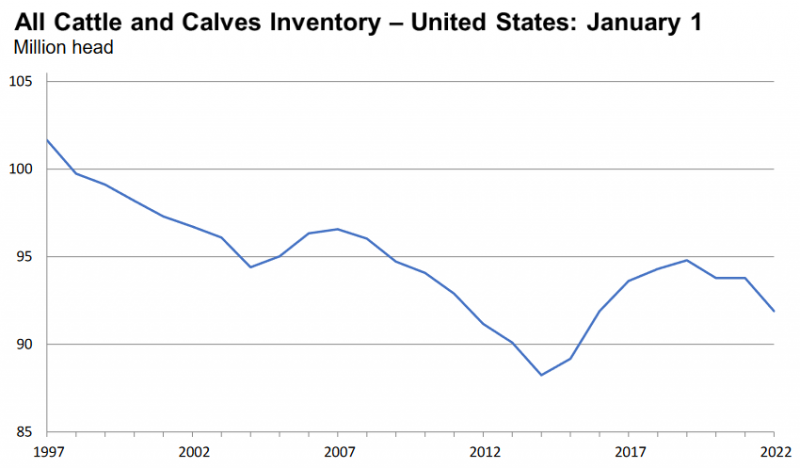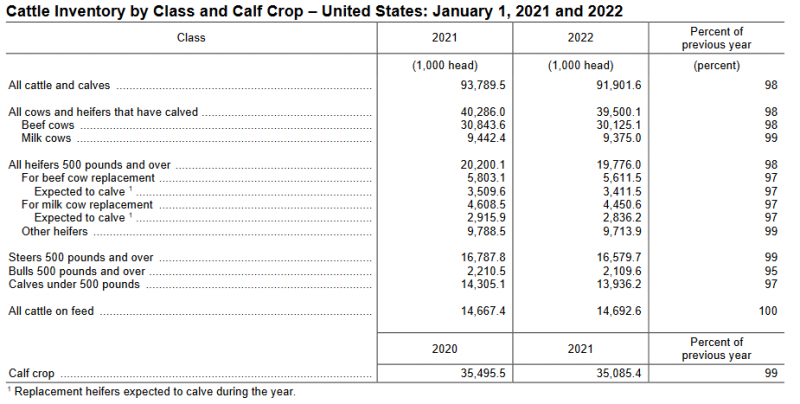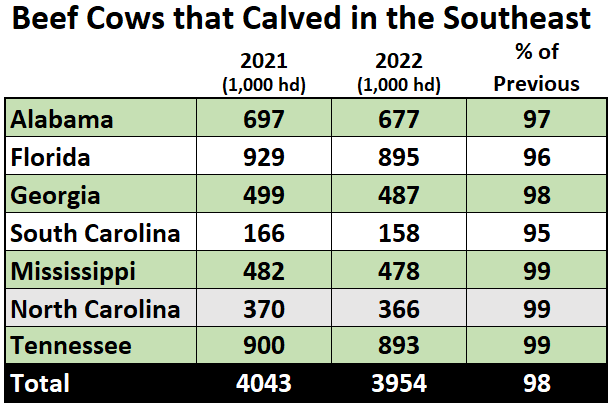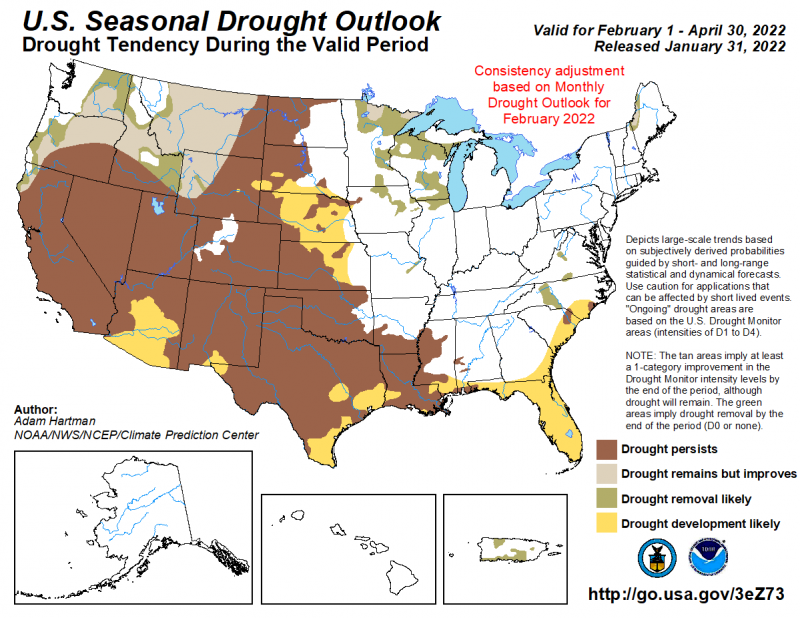USDA’s National Agricultural Statistic Service (NASS) released the January 1 Cattle Inventory Report on January 31, 2022. These reports are a little confusing, as the year listed is the date of the report (Jan 1), but they are actually measuring the national inventory at the end of the previous year, so what is marked as 2022 on the chart above is really where we stood at the end of 2021. For the third straight year, the national cattle inventory declined in 2021, since the recent peak of 94.8 million at the end of 2018. According to NASS there were 91.9 million cattle in the U.S. at the end of 2021, which was a 2% drop from the previous year. NASS estimates the national cattle inventory twice per year on January 1 and July 1.
–
When you look at the national herd inventory by class you can see that cattle on feed was the only category up slightly from the previous year. This number suggests that flow of cattle out from feedyards to slaughter did not match the flow of cattle coming in 2021. The beef cow herd dropped from 30.8 M to 30.1 M or 2%. Yearling replacement heifers and coming two-year old heifers dropped 3%. Milk cows dropped only 1% from 9.8 M to 9.7 M. Yearling and bred dairy heifers dropped 3% as well.
–
When you look through the beef herd numbers in the Southeast you can see that overall, there were 89 K fewer cows that calved last year than the previous year. In Florida there were 34,000 fewer cows that calved, or 4% fewer than the previous year.
–
So what does this mean for local cattle ranchers?
CattleFax, provided an Economic Outlook Seminar at the recent National Cattlemen’s Beef Association (NCBA) Cattle Industry Convention in Houston, Texas. The following were a few highlights from the NCBA News Release following the event.
Cattle price and profitability trends for producers are pointed in the right direction, even as challenges and uncertainty persist with continued disruptions from the pandemic. While issues around labor and packing capacity have lingered, both are expected to improve in the year ahead. These expansions in capacity combined with strong global and domestic consumer beef demand suggests increased profitability across segments, signaling a market that is healthier and more stable in the year ahead. The average 2022 fed steer price is expected to be $140/cwt, up $18/cwt from 2021, with a range of $130 to $155/cwt throughout the year. All cattle classes are expected to trade higher, and prices are expected to improve. The 800-lb steer price is expected to average $172/cwt with a range of $158 to $184/cwt, and the 550-lb steer price is expected to average $205/cwt, with a range of $180 to $230/cwt. Finally, Good forecasted utility cows at an average of $75/cwt with a range of $65 to $85/cwt, and bred cows at an average of $1,850/head with a range of $1,700 to $2,000 for load lots of quality, running-age cows. Source: NCBA News Release
Smaller supply and positive demand for beef retail products is good news for cattle producers. These cattle price quotes were very encouraging, but remember that calves sold in Florida, Alabama, and Georgia are discounted due to the cost of freight. So, understand there is a difference between the national average and the local average price.
We do also have to remember why the national inventory of cattle is shrinking. The primary reason has been severe drought in the western half of the U.S. That is still a major concern, as the most recent Seasonal Drought Outlook shows through April.
–
Moisture in the western states is most influenced by winter and spring moisture. Based on the Climate Prediction Center’s current forecast, drought will continue to be a serious issue in 2022. Notice this forecast also includes much of the state of Florida. If this trend continues, the U.S. Beef herd will likely continue to shrink. So while inflation keeps raising production costs, the cattle markets should continue to improve as herds are reduced to compensate for drought.
Will cattle prices keep pace with the inflation of input costs? That is the big question on everyone’s mind in 2022. Based on CattleFax’s bullish forecast, it does appear that feeder calf prices will steadily improve in 2022. Cattle prices are expected to move up faster this year, as beef processing moves back to full speed again, keeping feedyards current shipping finished cattle on time. This is all positive news, if producers can find ways to keep production costs low enough to remain profitable. Markets are improving, so the input cost variables will be the primary factor that determines profitability in 2022 and beyond.
–
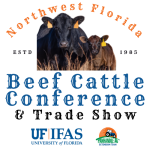 Managing Costs without Sacrificing Productivity is the theme of the upcoming Northwest Florida Beef Cattle Conference & Trade Show, to be held February 9, 2022, in Marianna. Use the following link to register today to reserve your seats for this educational training for cattle ranchers.
Managing Costs without Sacrificing Productivity is the theme of the upcoming Northwest Florida Beef Cattle Conference & Trade Show, to be held February 9, 2022, in Marianna. Use the following link to register today to reserve your seats for this educational training for cattle ranchers.
–
https://2022nwflbeefconference.eventbrite.com
- November 2025 Weather Summary & Winter Outlook - December 5, 2025
- Friday Feature: The History of Beekeeping - December 5, 2025
- Friday Feature:Malone Pecan Festival Tractorcade - November 21, 2025

